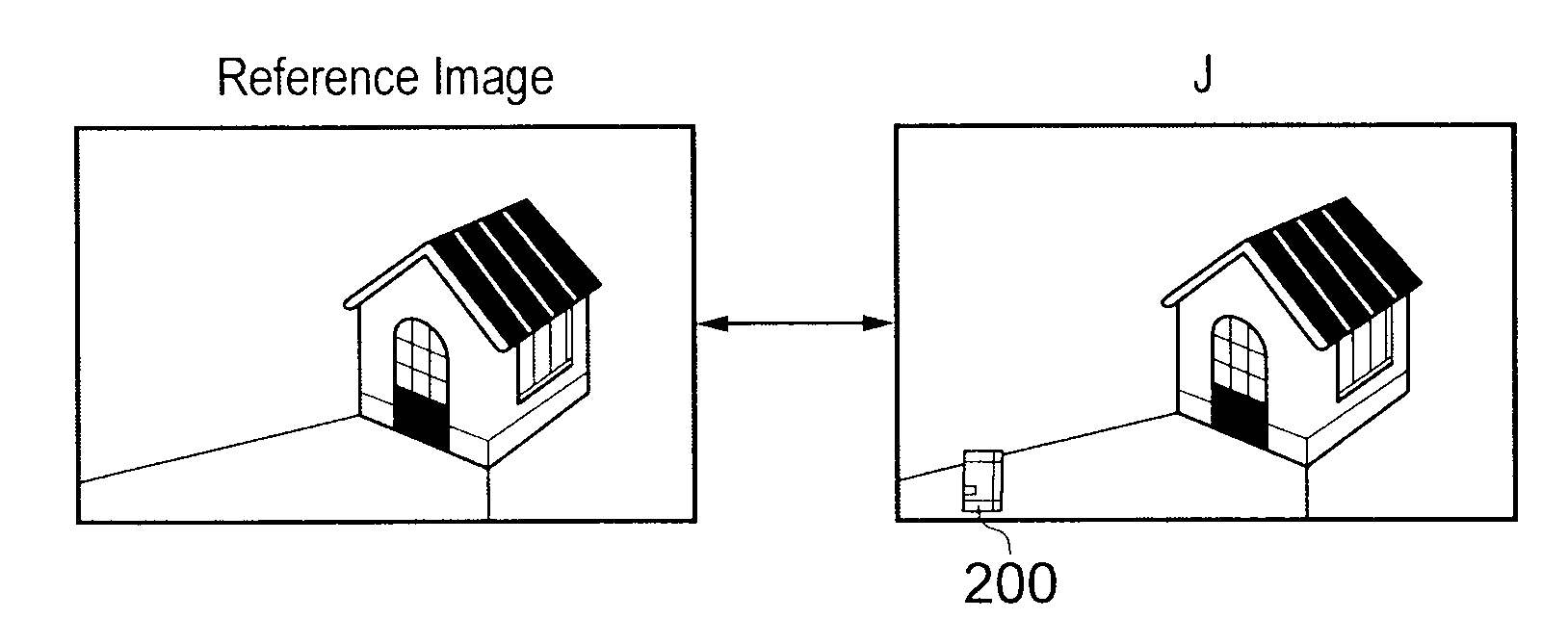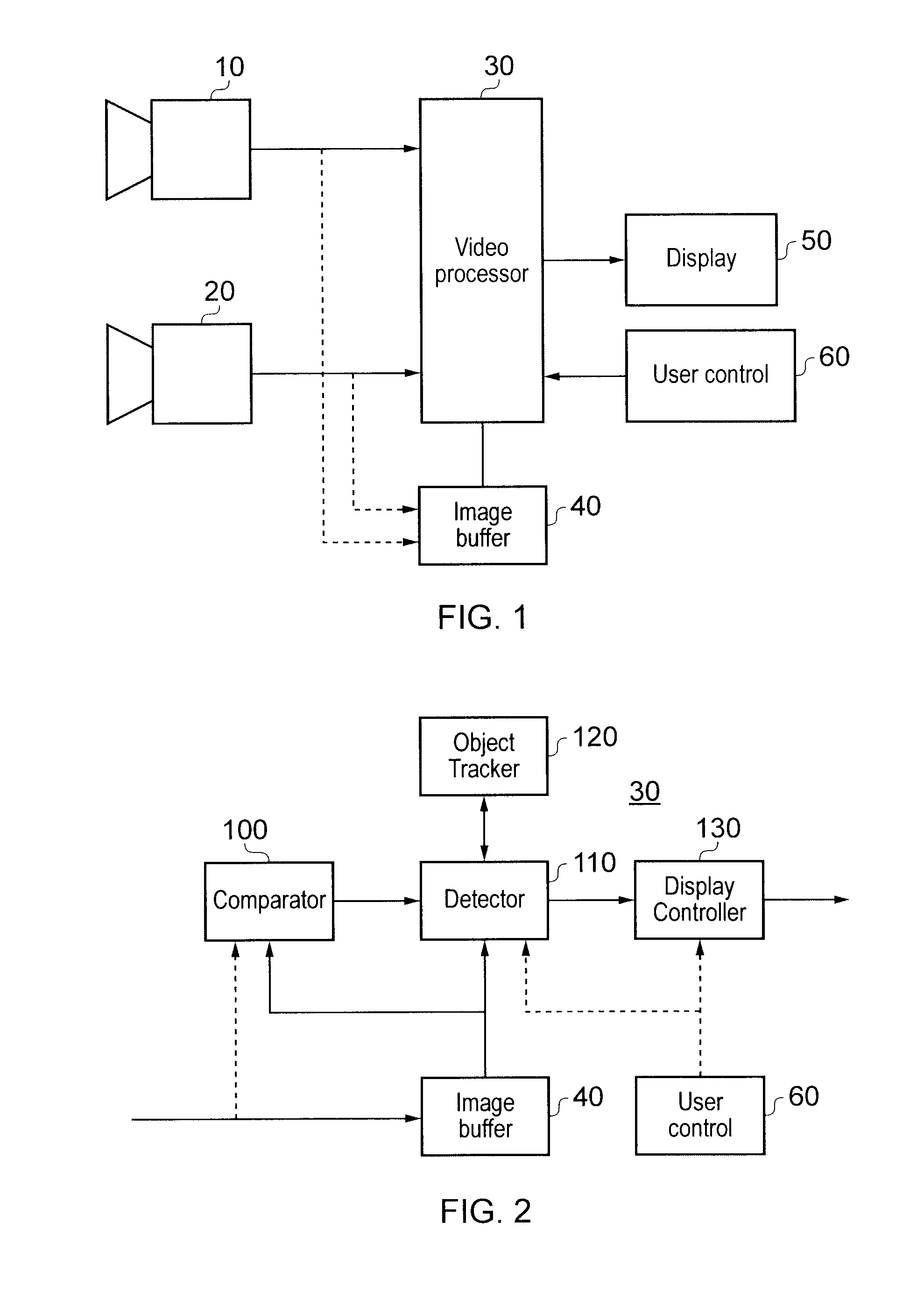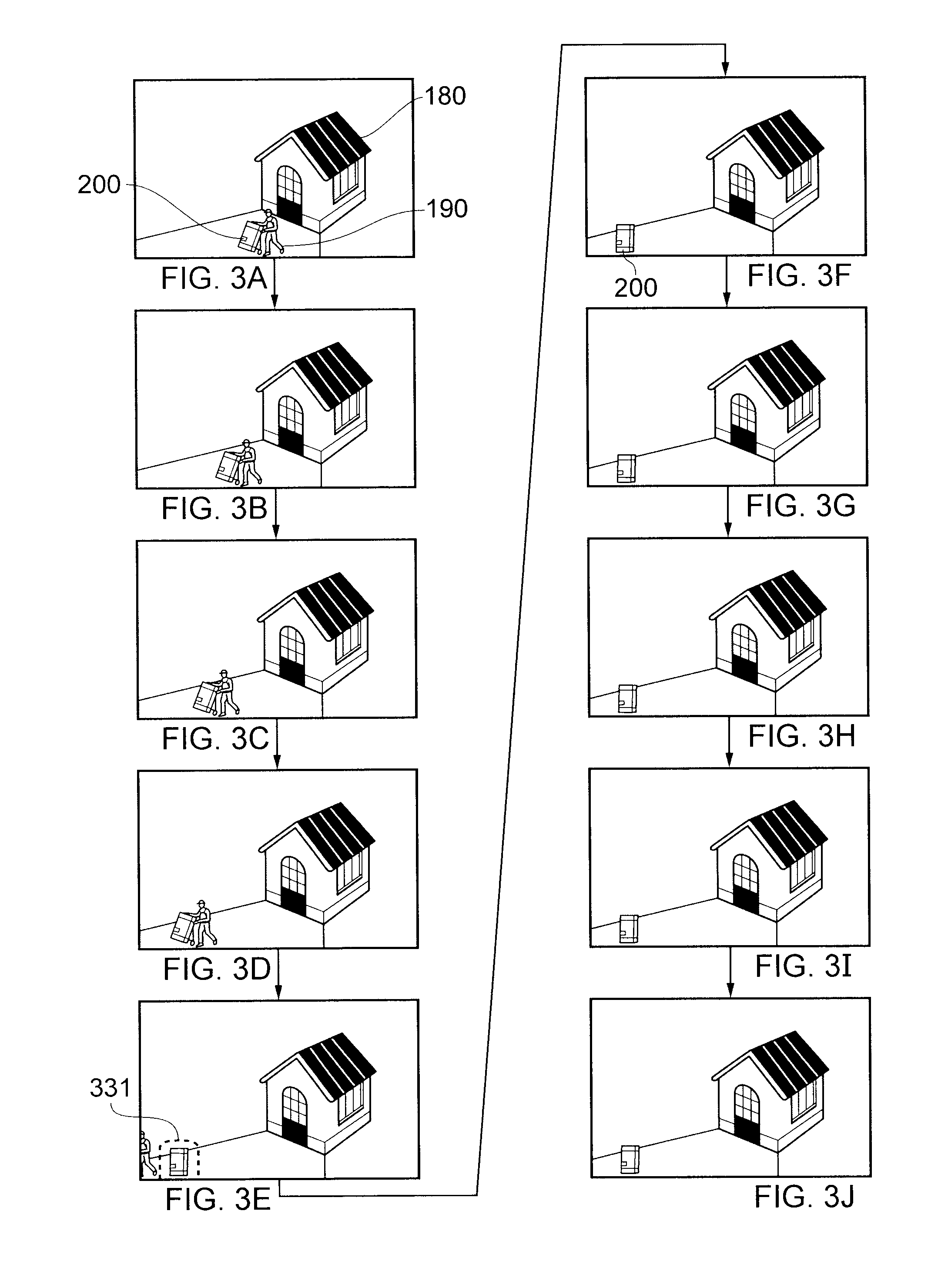Video processing
- Summary
- Abstract
- Description
- Claims
- Application Information
AI Technical Summary
Benefits of technology
Problems solved by technology
Method used
Image
Examples
Embodiment Construction
[0044]Referring now to FIG. 1, a video surveillance system comprises two video cameras 10, 20; a video processor 30; an image buffer 40; a display 50 and a user control 60.
[0045]The video cameras 10, 20 supply video signals to the video processor 30. The video signals comprise successive images, generally at a fixed image rate. In contrast to broadcast cameras, surveillance cameras do not necessarily operate at image rates sufficient to provide a smooth portrayal of motion; indeed, in some systems a surveillance camera might output an image only (say) once every second, or once every 0.25 seconds. Alternatively, the cameras could operate at a normal image rate (for example 25 images per second), in which case the video processor could make use of all of the captured images or could discard some of them (for example nine images in every ten received from each camera) so as to reduce the image rate of images which are subject to storage and processing.
[0046]The cameras may be monochro...
PUM
 Login to View More
Login to View More Abstract
Description
Claims
Application Information
 Login to View More
Login to View More - R&D
- Intellectual Property
- Life Sciences
- Materials
- Tech Scout
- Unparalleled Data Quality
- Higher Quality Content
- 60% Fewer Hallucinations
Browse by: Latest US Patents, China's latest patents, Technical Efficacy Thesaurus, Application Domain, Technology Topic, Popular Technical Reports.
© 2025 PatSnap. All rights reserved.Legal|Privacy policy|Modern Slavery Act Transparency Statement|Sitemap|About US| Contact US: help@patsnap.com



